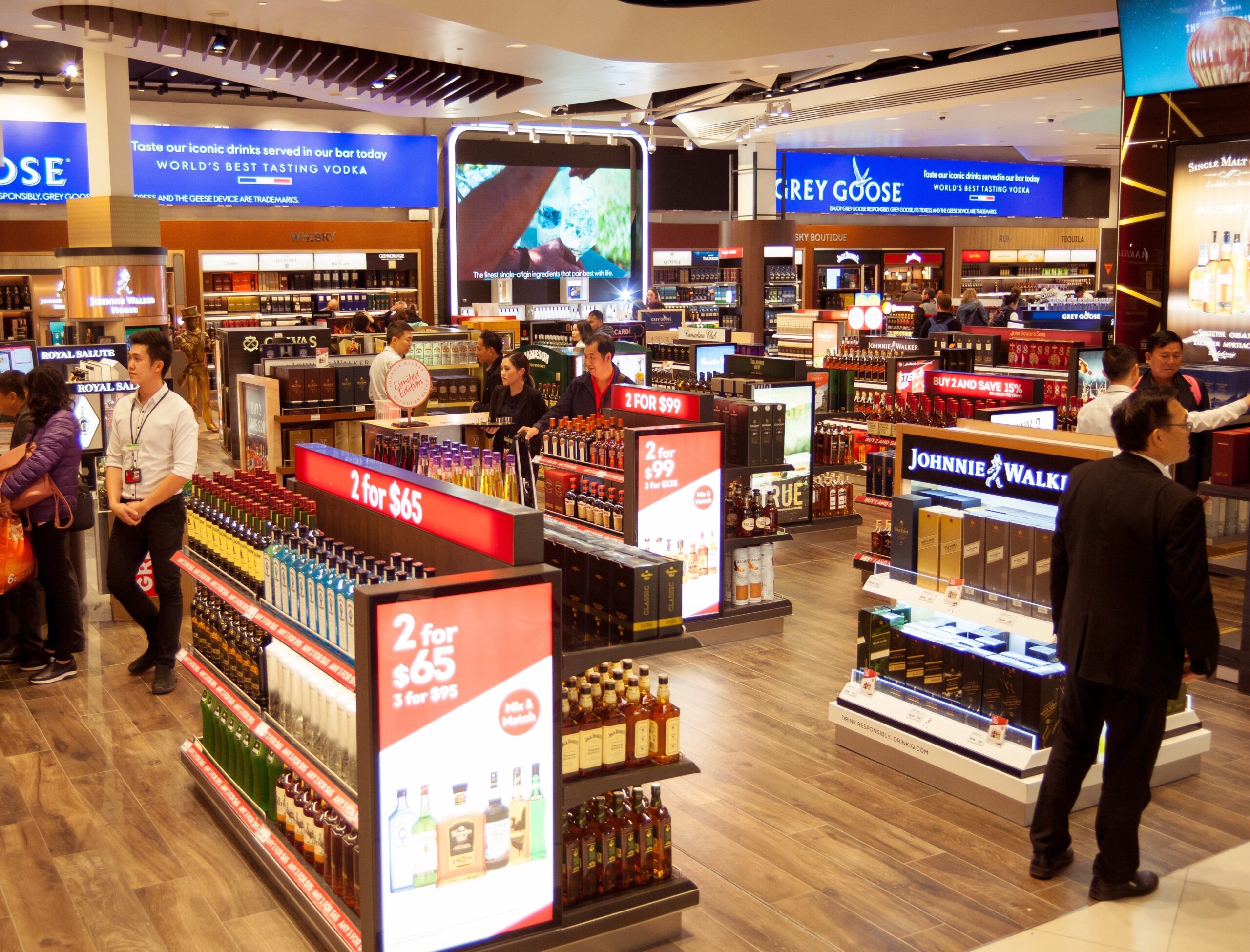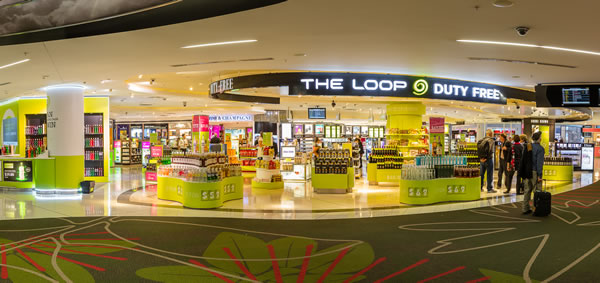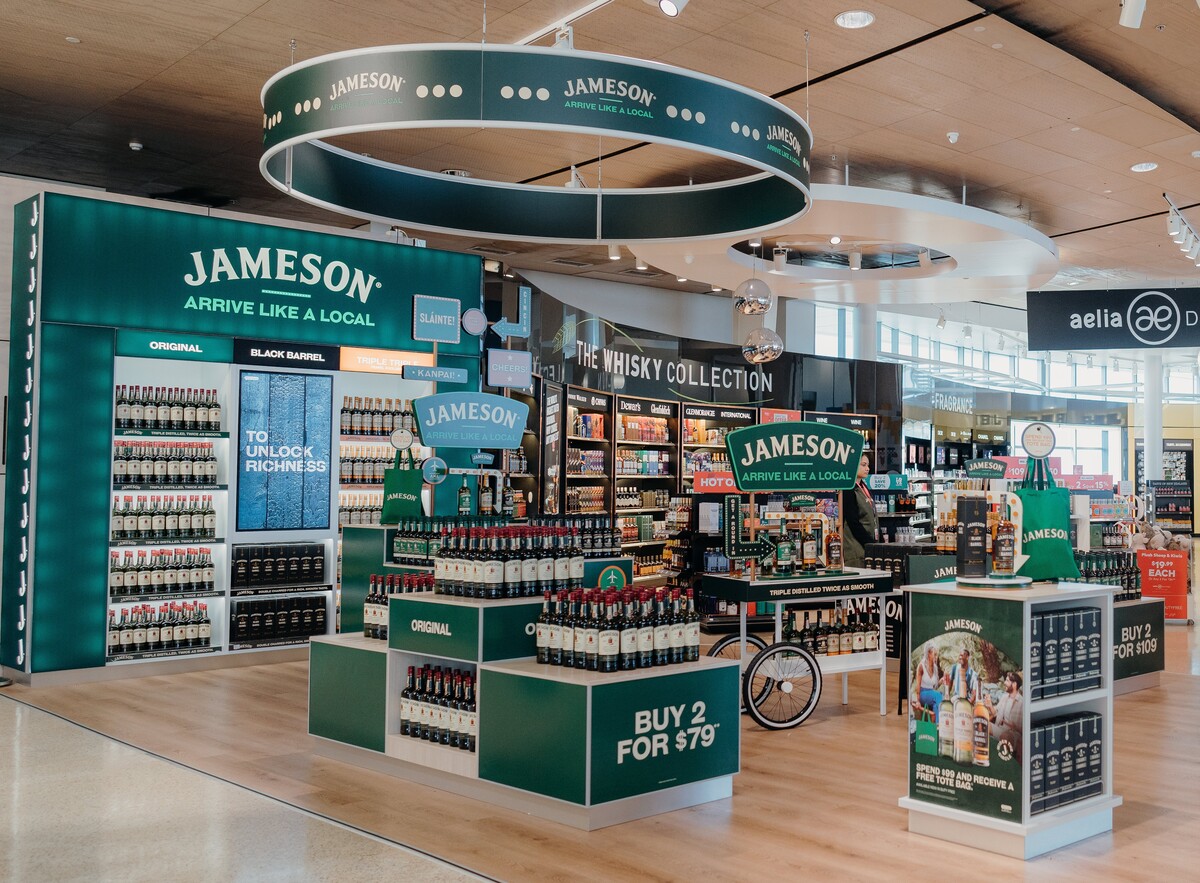 AUSTRALIA/NEW ZEALAND. Ivo Favotto, a Sydney-based executive and company owner who has worked for all three stakeholders in the Trinity chain, presents the latest figures plus commentary on the gradual re-emergence of airport commercial activities in Australia and New Zealand. Favotto owns and runs The Mercurius Group, a consultancy focused on industry research, consultancy and benchmarking studies, as well as operating his own destination merchandise supply business.
AUSTRALIA/NEW ZEALAND. Ivo Favotto, a Sydney-based executive and company owner who has worked for all three stakeholders in the Trinity chain, presents the latest figures plus commentary on the gradual re-emergence of airport commercial activities in Australia and New Zealand. Favotto owns and runs The Mercurius Group, a consultancy focused on industry research, consultancy and benchmarking studies, as well as operating his own destination merchandise supply business.
After a run of months with airport retail and food & beverage reopenings rising, new outbreaks of coronavirus in Melbourne and Auckland have sent the revival into reverse. Favotto warns that the reality of a long, drawn out recovery is dawning on an industry which is now in a fight for its very survival.
The Australiasian travel retail industry is watching with joy (and a touch of envy) the recovery of passenger traffic and reopening of travel retail outlets across the globe. On the home front, however, August 2020 witnessed the emergence of the dreaded sawtooth recovery.
August marks the fifth edition of The Mercurius Group’s monthly reports on travel retail’s recovery from COVID-19 in Australia and New Zealand. The analysis records the reopening of travel retail stores across 27 airports with more than 0.5 million passengers. Pre COVID-19, these airports had a collective total of 781 duty free, specialty and F&B stores. And for each of the first four months of our analysis, a steady recovery was evident. In April, a paltry 8.5% of pre COVID19 travel retail outlets were open. By May, that had risen to a more hopeful 18%. By June, 27% were reopened and by July a more promising 41% had recommenced trading.

In August however, the fragility of the recovery became evident as the steady growth in the reopening schedule recorded up to July was rudely interrupted by COVID-19 outbreaks in both Australia and New Zealand.
In Australia, a significant outbreak in the city of Melbourne – which has seen Australia’s total deaths from COVID-19 jump 104 in June to 652 – resulted in a severe lockdown in the State of Victoria and the reclosure of state borders, with virtually every other state banning travellers from Victoria.
Meanwhile, in New Zealand, a smaller outbreak has caused the notoriously strict and uber conservative New Zealand government (in terms of COVID-19 at least) to reimpose restrictions on travel and movement in Auckland.
These newly-reimposed restrictions have had a knock-on effect on the travel retail recovery with total outlets open in August falling to 35% of pre COVID-19 levels – largely (although not exclusively) driven by the airports in the lockdown cities of Melbourne and Auckland.
While both countries have a smattering of international flights, these are primarily repatriation flights with mandatory quarantine requirements and quotas limiting international travel.
International versus domestic divide
In both Australia and New Zealand, international borders remain resolutely shut and talk of a travel bubble between the two countries has been put on hold and the prospect appears unlikely to resurface until firm evidence of the cessation of community transmission appears.
In its recent annual results announcement, Qantas CEO Alan Joyce said that the airline’s international network was unlikely to restart before July 2021 and that the NZ travel bubble was off the cards for 2020. Referencing the nature of the recovery, Joyce said “recovery will take some time and it will be choppy”. In other words, a sawtooth recovery.
Similarly, Air New Zealand is not expecting a material level of international flights anytime soon either, not withstanding the prospect of a travel bubble with some small Pacific Island nations.

While both countries have a smattering of international flights, these are primarily repatriation flights with mandatory quarantine requirements and quotas limiting international travel.
From a travel retail perspective, the knock-on effect is that the vast majority of outlets in international terminals remain closed – with the very real prospect that some may not return. While the overall average number of outlets re-opened is 35%, it is only 16% for international terminals and 45% for domestic terminals.
While the recovery in travel retail openings has been largely driven by domestic terminals, there have been some twists. For example, pre COVID-19, the Melbourne to Sydney route was the second busiest in the world. Today, Australia’s busiest route is Brisbane to Cairns – both cities located in the vast State of Queensland (seven times the size of the UK).
Overall travel retail openings throughout Queensland airports are ahead of the rest of the country (39% versus 35% overall). This reflects the State’s relatively healthy domestic travel levels, which are underpinned by a strong resource sector driving essential service FIFO traffic (an Australian term for mining workers who fly in/fly out of remote mines) and an intrastate tourism boom.
Operators are virtually high-fiving their local teams when an outlet breaks four-figure daily sales. Many reopened stores are eking out an existence on just hundreds of dollars in sales per day.
Australia versus New Zealand
In July, New Zealand was leading the travel retail recovery, with 57% of stores open, driven strongly by reopenings in domestic terminals. By August, with the reintroduction of travel restrictions around the Auckland outbreak, travel retail openings in New Zealand are now back to 40%. We anticipate a quick bounce-back in reopenings once restrictions on domestic travel are lifted (hopefully imminently).
By contrast, in July, only 36% of travel retail outlets had re-opened in Australia and in August, only 33%.
Operators’ perspective
As we gather data and insights into reopenings, we have to constantly readjust our perceptions of what success looks like.
While 35% of stores are now re-opened, that does not mean the sales are at 35% of pre COVID-19 levels. Far from it. Reopenings are artificially high, supported by government wage subsidies. In Australia, the government’s ‘Job-Keeper’ payments (now extended to March 2021, albeit at lower levels) have allowed operators to reopen stores without burning cash and similarly in New Zealand with their wage subsidy scheme (which is almost at an end however).

Operators are virtually high-fiving their local teams when an outlet breaks four-figure daily sales (i.e. more than A$1,000 per day). Many reopened stores are eking out an existence on just hundreds of dollars in sales per day.
At the same time, in many cases, outlets at small regional airports are outperforming their capital city siblings. As many regional sites are effectively master concessions, there is reduced risk of competitor reopenings and more cash flow certainty.
With not so distant memories of hundreds of thousands of dollars of stock wastage and more lying idle, operators are now implementing a different playbook with more tightly-managed ranges and stock levels together with trimmed operating hours that are helping to cushion the impacts.
Future trends
In this environment, predicting the future is a mug’s game. At least in Australia and New Zealand, the reality of a long, drawn out recovery is dawning on an industry which is now in a fight for its very survival. Try as we might to put a positive spin on things, the Melbourne and Auckland shutdowns – and their sawtooth effects on travel retail’s recovery – is a sobering reminder of the fragility of the situation for the travel retail industry in both Australia and New Zealand.

As island nations, both countries have adopted a very conservative approach to re-opening borders which, while reducing the COVID-19 death rate amongst its citizens, is choking travel retail and other tourism and travel related industries. Take your pick of clichés. Damned if you do and damned if you don’t. Stuck between a rock and a hard place. Stuck between the devil and the deep blue sea.
Whichever way you look at it, it isn’t pretty.
Ivo Favotto contact: Tel: +61 423 564 057; E-mail: ifavotto@themercuriusgroup.com; Website: www.themercuriusgroup.com












